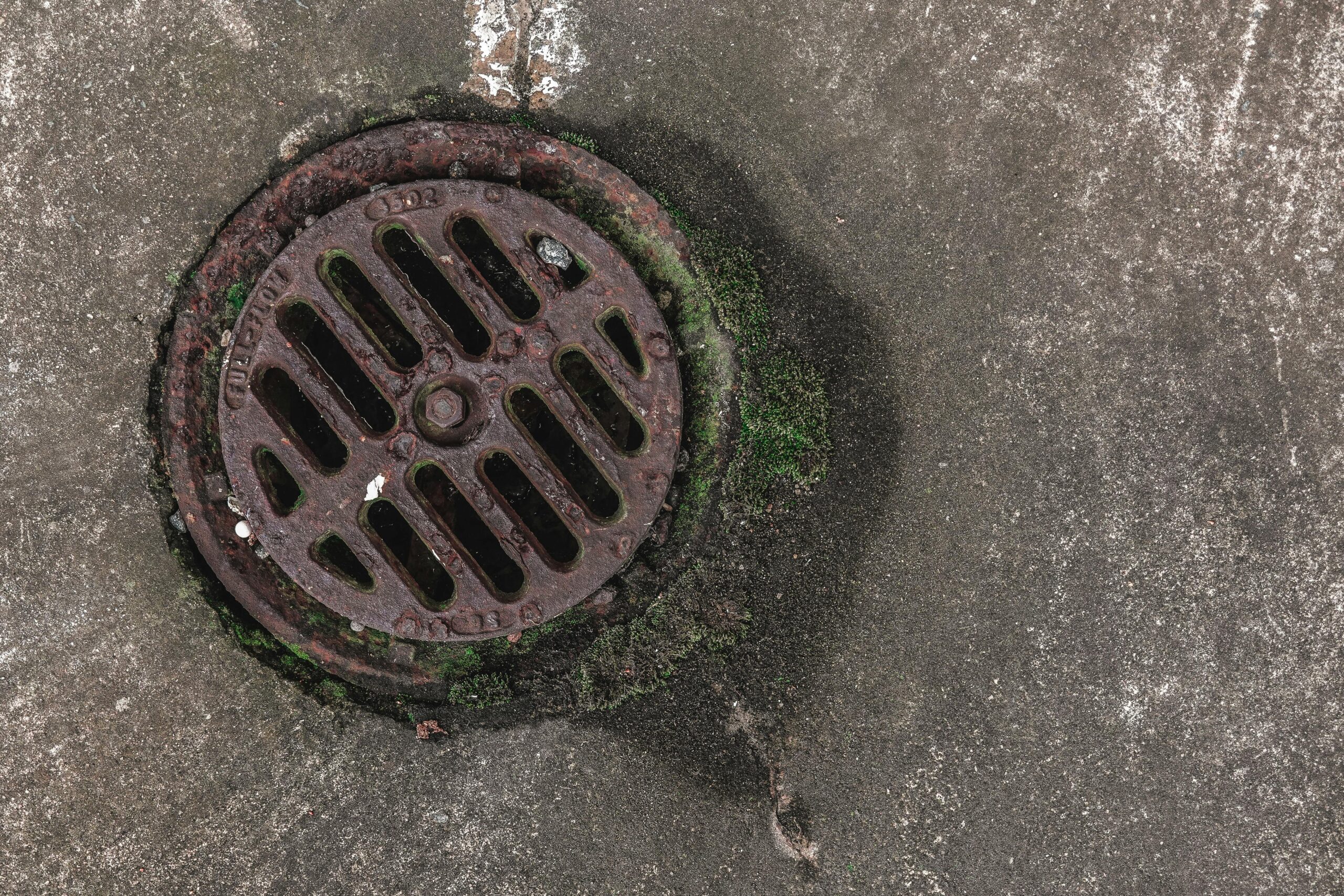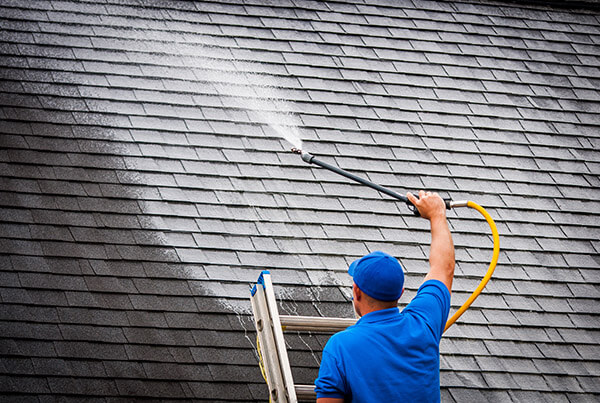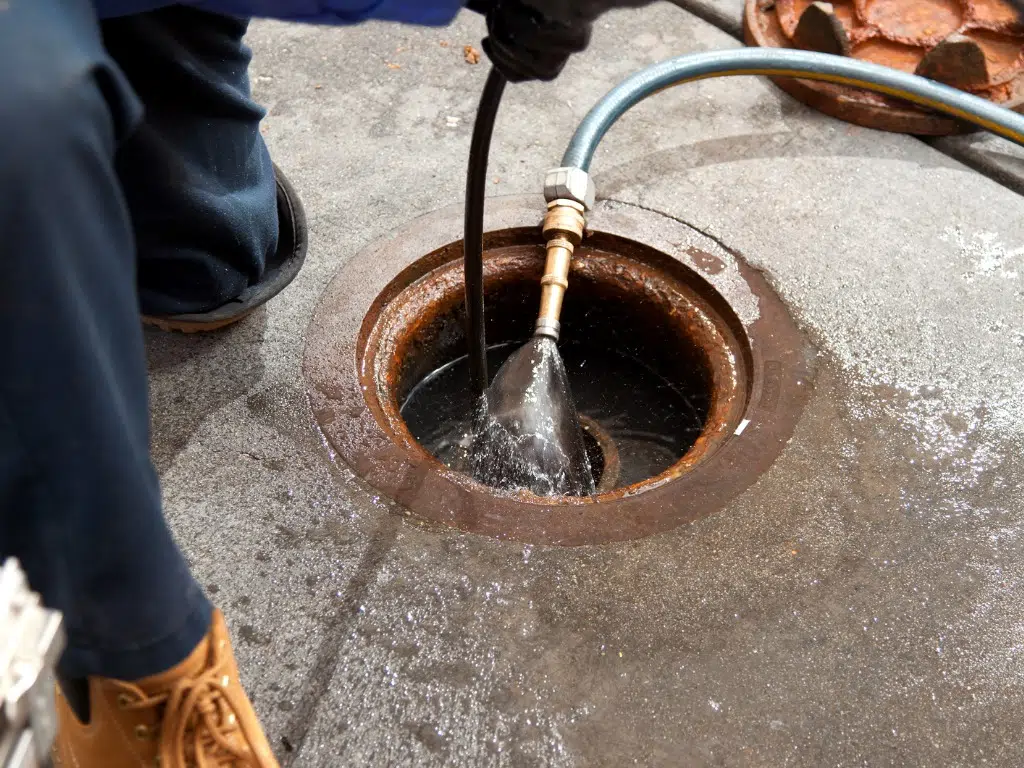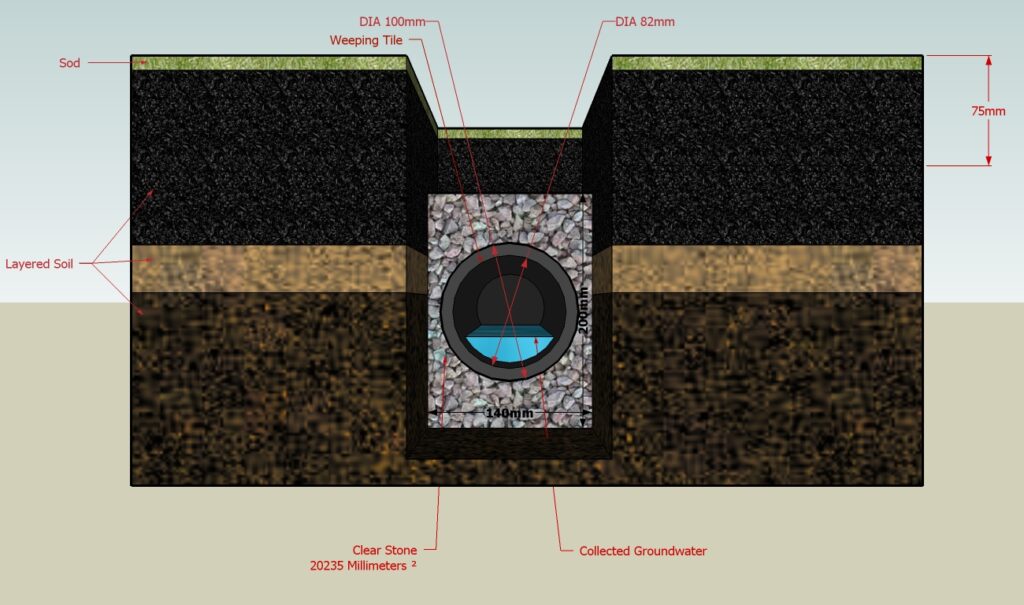Dealing with soggy spots or pooling water in your yard? A French drain might be the solution you need. It’s a simple yet effective system designed to redirect water away from areas where it collects, helping to prevent flooding and protect your home’s foundation. In this guide, we’ll walk you through everything you need to know about installing a French drain—from planning and materials to step-by-step instructions and maintenance tips. Whether you’re tackling it as a DIY project or considering professional help, this post will help you make informed decisions.
What Is a French Drain?
A French drain is a trench filled with gravel or rock and a perforated pipe that redirects surface and groundwater away from specific areas. It’s particularly helpful in yards with poor drainage, where heavy rainfall or runoff causes standing water.
By using gravity and proper slope, water is collected into the pipe and carried to a drainage outlet like a dry well or storm drain. The system helps manage water flow, preventing soil erosion, mold growth, and structural damage.
Planning and Preparation
Before you dig, plan. A French drain needs to be properly located and sloped to work effectively:
- Mark where water pools in your yard and identify a path where water can drain downhill safely.
- Call 811 before digging to mark any underground utilities.
- Check local regulations or zoning laws. Some areas require permits for drainage projects.
- Ensure proper slope: At least 1% (1-inch drop every 10 feet). Use string and a level to mark the trench path.
Mark your trench path using stakes or landscape paint. Avoid obstacles like tree roots or fences, and make sure the outlet point isn’t affecting your neighbors.
Materials You’ll Need
Here’s what you’ll typically need for a standard French drain:
- Perforated pipe (4- or 6-inch)
- Water-permeable landscape fabric (preferably non-woven for clay soil)
- Gravel (3/4 to 1 inch)
- Shovel or trenching tool
- Drain pipe cap
- Optional: Catch basin, topsoil, or mulch for landscaping
For clay-heavy soils, you may want to backfill with sand and use a stronger pipe like SDR35, which resists collapse better than corrugated plastic.
How to Install a French Drain (Step-by-Step)
- Dig the Trench
- Make it 12–18 inches deep and 8–12 inches wide.
- Ensure a consistent slope for proper drainage.
- Use a shovel or rent a trencher for larger projects.
- Line the Trench
- Place water-permeable landscape fabric along the trench. This prevents soil from clogging the gravel and pipe.
- Leave excess fabric on the sides to wrap over the top later.
- Add Gravel Base
- Pour a 2-inch layer of gravel at the bottom to create a stable base for the pipe.
- Lay the Perforated Pipe
- Position the pipe with holes facing down. This allows water to enter from the bottom and flow out.
- Cap one end to prevent debris entry. Connect the other end to a dry well, storm drain, or suitable outlet.
- Add More Gravel and Wrap Fabric
- Add 2–4 inches of gravel on top of the pipe.
- Fold the fabric over the gravel to fully enclose the system.
- Backfill and Finish
- Fill the remaining space with gravel for maximum drainage or use topsoil and sod to blend with the yard.
- Optional: Add grass seed, mulch, or decorative stones to match your landscape.
For a visual reference, check this step-by-step drainage guide.
French Drain Installation
Special Tips for Clay Soil
- Use non-woven geotextile fabric to separate soil and gravel.
- Maintain a slope of at least 2% for effective drainage.
- Add catch basins for areas with excessive water runoff.
- Avoid planting deep-rooted trees or shrubs near the trench.
Cost: DIY vs. Professional
| Type | Estimated Cost |
| DIY (10–30 feet) | $200–$1,000 |
| Professional Install | $2,000–$6,000+ |
If your yard has complex grading or rocky soil, hiring a professional may be the safer route. They can also ensure the system complies with local building codes and offer long-term warranties.
Maintenance and Lifespan
- Inspect twice a year, especially after major storms.
- Clear out leaves and debris from the inlet.
- Flush the pipe using a garden hose to keep it clean.
- Avoid driving or placing heavy equipment over the system.
With proper care, a French drain can last 30 years or more.
For more guidance on long-term drainage maintenance, read this university article on French drains.
Final Thoughts
Installing a French drain is one of the most effective ways to manage excess water in your yard. Whether you’re preventing basement leaks or simply want a dry, usable lawn after heavy rains, a well-planned drain system can make all the difference.
While DIY is cost-effective, it’s crucial to plan carefully, especially regarding slope and materials. And for tricky yards or clay-heavy soil, a consultation with a drainage professional may be the best investment.
With the right setup and consistent upkeep, your French drain will serve your landscape well for decades to come.









